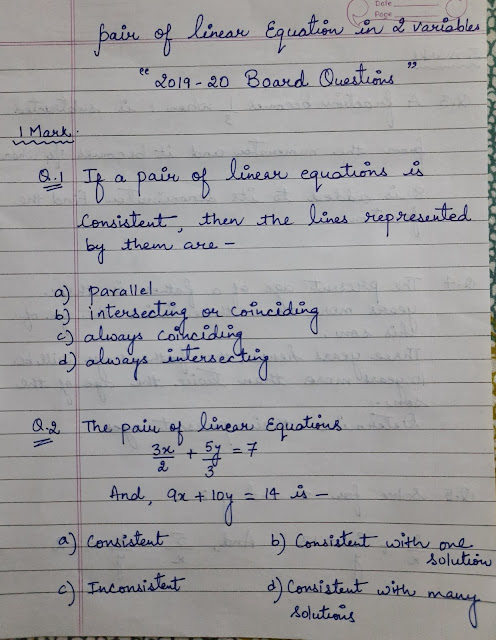PT -2 SYLLABUS
CLASS 9 (2019-20)
HINDI
स्पर्श :धर्म की आड़, कीचड़ का काव्य, आदमीनामा
संचयन :मेरा छोटा सा निजी पुस्तकालय
व्याकरण :उपसर्ग, प्रत्यय, संधि
लेखन :विज्ञापन
अपठित गद्यांश
व्याकरण :उपसर्ग, प्रत्यय, संधि
लेखन :विज्ञापन
अपठित गद्यांश
ENGLISH
Reading. Section
Writing Section
Article Writing
Diary Entry
Story Writing
Beehive
Packing
The duck and the Kangaroo
Reach for the top
On killing tree
Supp. Book - Lesson 5
MATHS
CHAPTER- 7 – TRIANGLES
CHAPTER -8 – QUADRILATERALS
CHAPTER-13- SURFACE AREA AND VOLUME
SST
HISTORY- FOREST SOCIETY AND COLONIALISM
GEOGRAPHY- NATURAL VEGETATION AND WILDLIFE.
CIVICS- ELECTORAL POLITICS
ECONOMICS- POVERTY AS A CHALLENGE
SCIENCE
PHYSICS-CHAPTER -10 -GRAVITATION
(BUOYANCY)
CHAPTER -11 - WORK AND ENERGY.
CHEMISTRY-ATOMS AND MOLECULES
BIOLOGY-WHY DO WE FALL ILL?
PT -2 SYLLABUS
CLASS 9 (2019-20)
HINDI
स्पर्श :धर्म की आड़, कीचड़ का काव्य, आदमीनामा
संचयन :मेरा छोटा सा निजी पुस्तकालय
व्याकरण :उपसर्ग, प्रत्यय, संधि
लेखन :विज्ञापन
अपठित गद्यांश
व्याकरण :उपसर्ग, प्रत्यय, संधि
लेखन :विज्ञापन
अपठित गद्यांश
ENGLISH
Reading. Section
Writing Section
Article Writing
Diary Entry
Story Writing
Beehive
Packing
The duck and the Kangaroo
Reach for the top
On killing tree
Supp. Book - Lesson 5
MATHS
CHAPTER- 7 – TRIANGLES
CHAPTER -8 – QUADRILATERALS
CHAPTER-13- SURFACE AREA AND VOLUME
SST
HISTORY- FOREST SOCIETY AND COLONIALISM
GEOGRAPHY- NATURAL VEGETATION AND WILDLIFE.
CIVICS- ELECTORAL POLITICS
ECONOMICS- POVERTY AS A CHALLENGE
SCIENCE
PHYSICS-CHAPTER -10 -GRAVITATION
(BUOYANCY)
CHAPTER -11 - WORK AND ENERGY.
CHEMISTRY-ATOMS AND MOLECULES
BIOLOGY-WHY DO WE FALL ILL?
PT -2 SYLLABUS
CLASS 9 (2019-20)
HINDI
स्पर्श :धर्म की आड़, कीचड़ का काव्य, आदमीनामा
संचयन :मेरा छोटा सा निजी पुस्तकालय
व्याकरण :उपसर्ग, प्रत्यय, संधि
लेखन :विज्ञापन
अपठित गद्यांश
व्याकरण :उपसर्ग, प्रत्यय, संधि
लेखन :विज्ञापन
अपठित गद्यांश
ENGLISH
Reading. Section
Writing Section
Article Writing
Diary Entry
Story Writing
Beehive
Packing
The duck and the Kangaroo
Reach for the top
On killing tree
Supp. Book - Lesson 5
MATHS
CHAPTER- 7 – TRIANGLES
CHAPTER -8 – QUADRILATERALS
CHAPTER-13- SURFACE AREA AND VOLUME
SST
HISTORY- FOREST SOCIETY AND COLONIALISM
GEOGRAPHY- NATURAL VEGETATION AND WILDLIFE.
CIVICS- ELECTORAL POLITICS
ECONOMICS- POVERTY AS A CHALLENGE
SCIENCE
PHYSICS-CHAPTER -10 -GRAVITATION
(BUOYANCY)
CHAPTER -11 - WORK AND ENERGY.
CHEMISTRY-ATOMS AND MOLECULES
BIOLOGY-WHY DO WE FALL ILL?
PT -2 SYLLABUS
CLASS 9 (2019-20)
HINDI
स्पर्श :धर्म की आड़, कीचड़ का काव्य, आदमीनामा
संचयन :मेरा छोटा सा निजी पुस्तकालय
व्याकरण :उपसर्ग, प्रत्यय, संधि
लेखन :विज्ञापन
अपठित गद्यांश
व्याकरण :उपसर्ग, प्रत्यय, संधि
लेखन :विज्ञापन
अपठित गद्यांश
ENGLISH
Reading. Section
Writing Section
Article Writing
Diary Entry
Story Writing
Beehive
Packing
The duck and the Kangaroo
Reach for the top
On killing tree
Supp. Book - Lesson 5
MATHS
CHAPTER- 7 – TRIANGLES
CHAPTER -8 – QUADRILATERALS
CHAPTER-13- SURFACE AREA AND VOLUME
SST
HISTORY- FOREST SOCIETY AND COLONIALISM
GEOGRAPHY- NATURAL VEGETATION AND WILDLIFE.
CIVICS- ELECTORAL POLITICS
ECONOMICS- POVERTY AS A CHALLENGE
SCIENCE
PHYSICS-CHAPTER -10 -GRAVITATION
(BUOYANCY)
CHAPTER -11 - WORK AND ENERGY.
CHEMISTRY-ATOMS AND MOLECULES
BIOLOGY-WHY DO WE FALL ILL?






































